The volume entitled A múzeumkerti Arany János-szobor [János Arany statue in The Museum Garden] is the most complete book about the monument, its birth, erection, reception and history so far. Behind the nearly 500-page volume is a huge amount of research and editorial work: in addition to the comprehensive overview text by the author, historian-museologist Béla Debreczeni-Droppán, the volume includes nearly 150 contemporary minutes, letters, invitations and other documents, and these are the true impressions of the world of work and taste in 19th century Hungary.
This is not the author's first work on the site: his book Múzeumkerti kalauz [Museum Garden Guide] was published in 2019, and the new publication proved that this important historical scene offers an inexhaustible opportunity to bring the events and values of the past closer to the people of today.
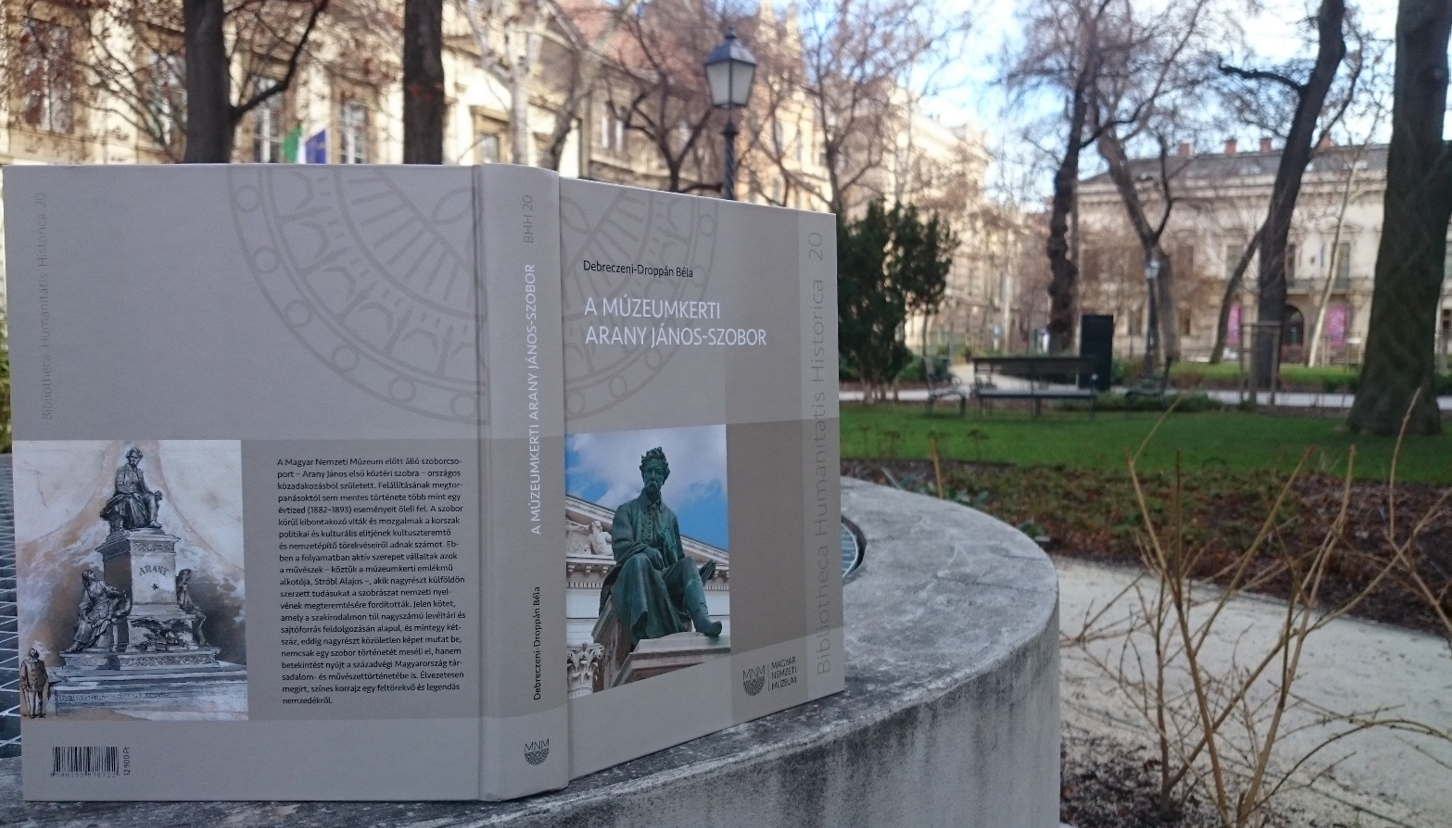
The book "A múzeumkerti Arany János-szobor" is intended for lovers of monuments and 19th-century history, but also those interested in art history (Photo: Dávid Mészáros/pestbuda.hu)
The first half of the publication consists of six easy-to-read chapters, each of which is built around a larger topic. The first is the story of the desire to erect the statue: we can read that the very next day after János Arany's death (22 October 1882), newspapers published articles about the need for the statue, and the public donation started immediately. This is what the capital newspaper Nemzet wrote on 23 October 1882:
"The Hungarian nation must immortalise the memory of János Arany with a statue in the capital. We have no doubt that the nation will hurry to fulfil this debt."
We can get to know the most famous capital donors, as well as the establishment of the Arany Statue Committee and its members. We get a glimpse of the operation of previous sculpture commissions, which is not only an interesting comparison but also helps us get to know the capital's 19th-century cultural milieu better.
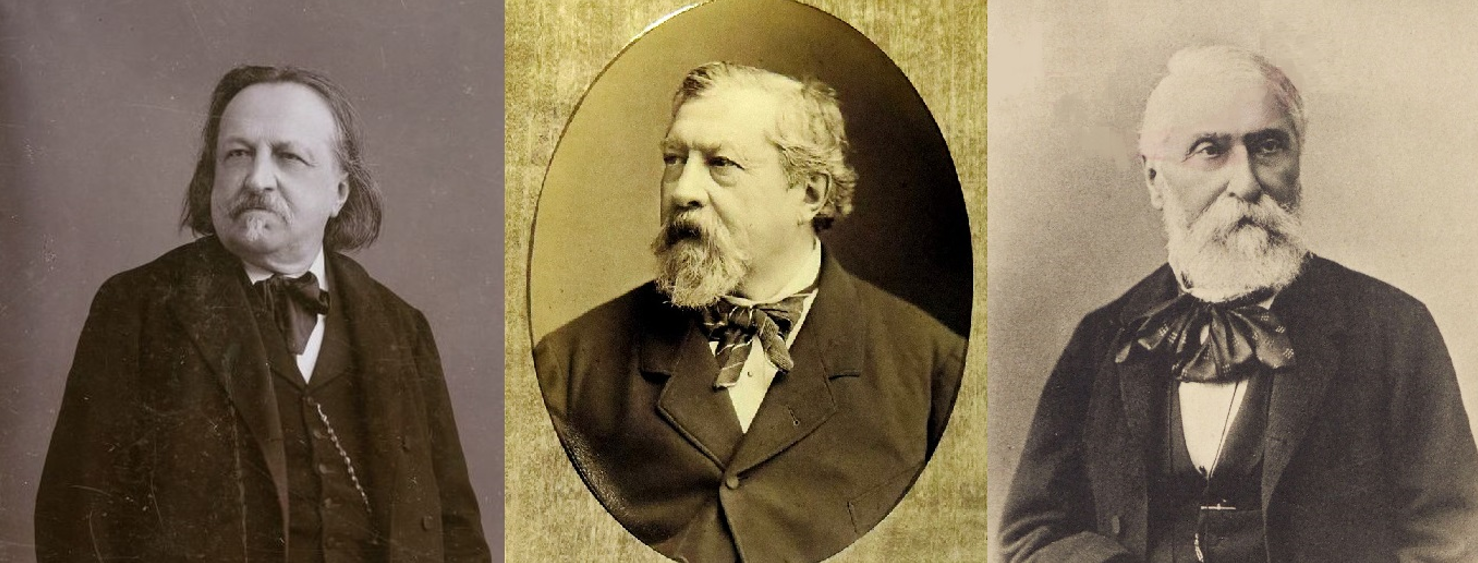
Big names among the members of the Arany Statue Committee: (from left to right) Ferenc Pulszky, art collector and politician; Miklós Ybl, the greatest architect of the era; Ágoston Trefort, Minister of Religion and Public Education, who was one of the presidents of the committee (Source of images: Wikimedia Commons)
Public donations were not only popular in Budapest, in the book we can find several companies that took part in the collection, be it in Bicske, Fiume or the American Cleveland.
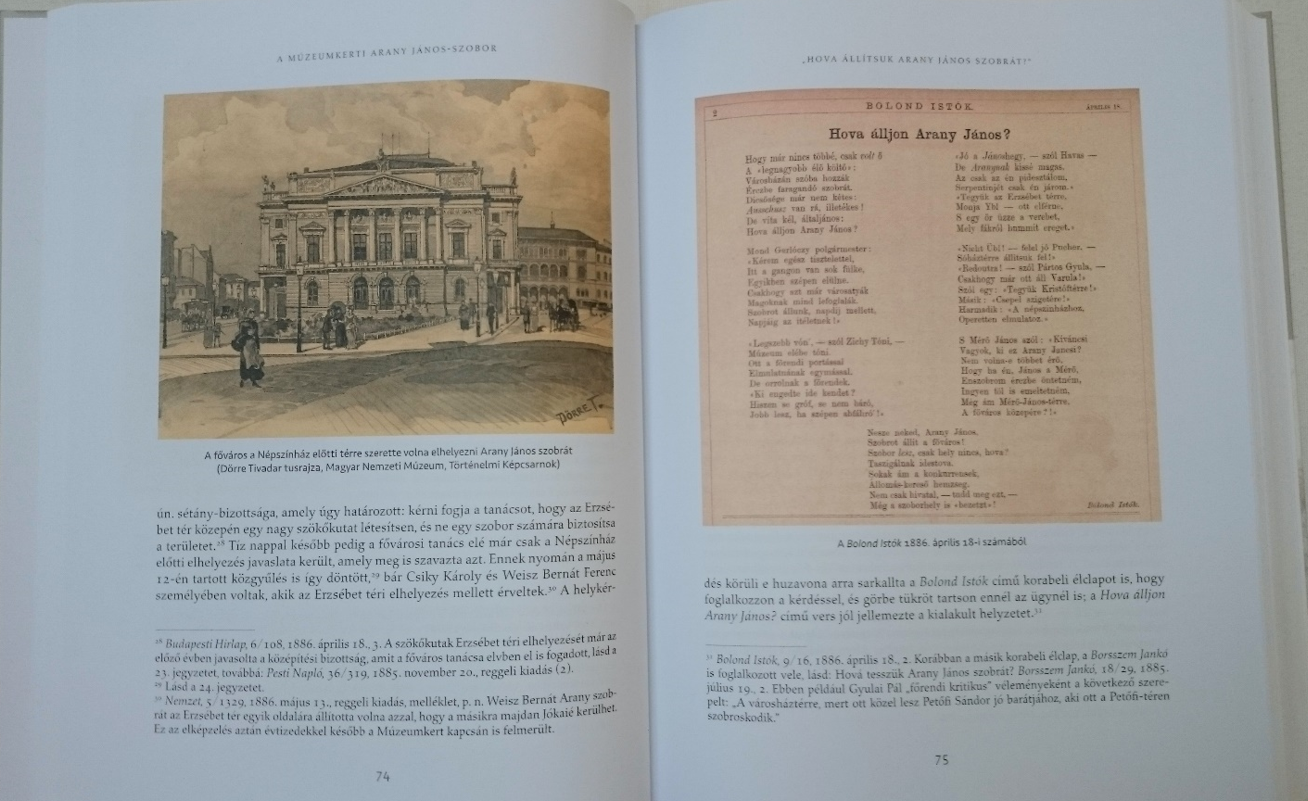
The contemporary engravings, caricatures, and newspaper excerpts published in the volume help you to delve deeper into the cultural life of 19th-century Budapest.
The second chapter presents the controversial years leading up to the selection of the statue's location. It was far from clear where the monument should be placed: although the forecourt of the National Museum came up first, some members of the committee considered Ferenciek Square, the square in front of the Castle Garden Bazaar, today's Jókai Square, Deák Square, the square in front of the People's Theatre, and also next to Erzsébet Square and several points of the Danube Promenade in Pest. We can get to know the actors of the debates, the arguments and counterarguments, how the intellectuals of the time thought about the beautiful and the right.
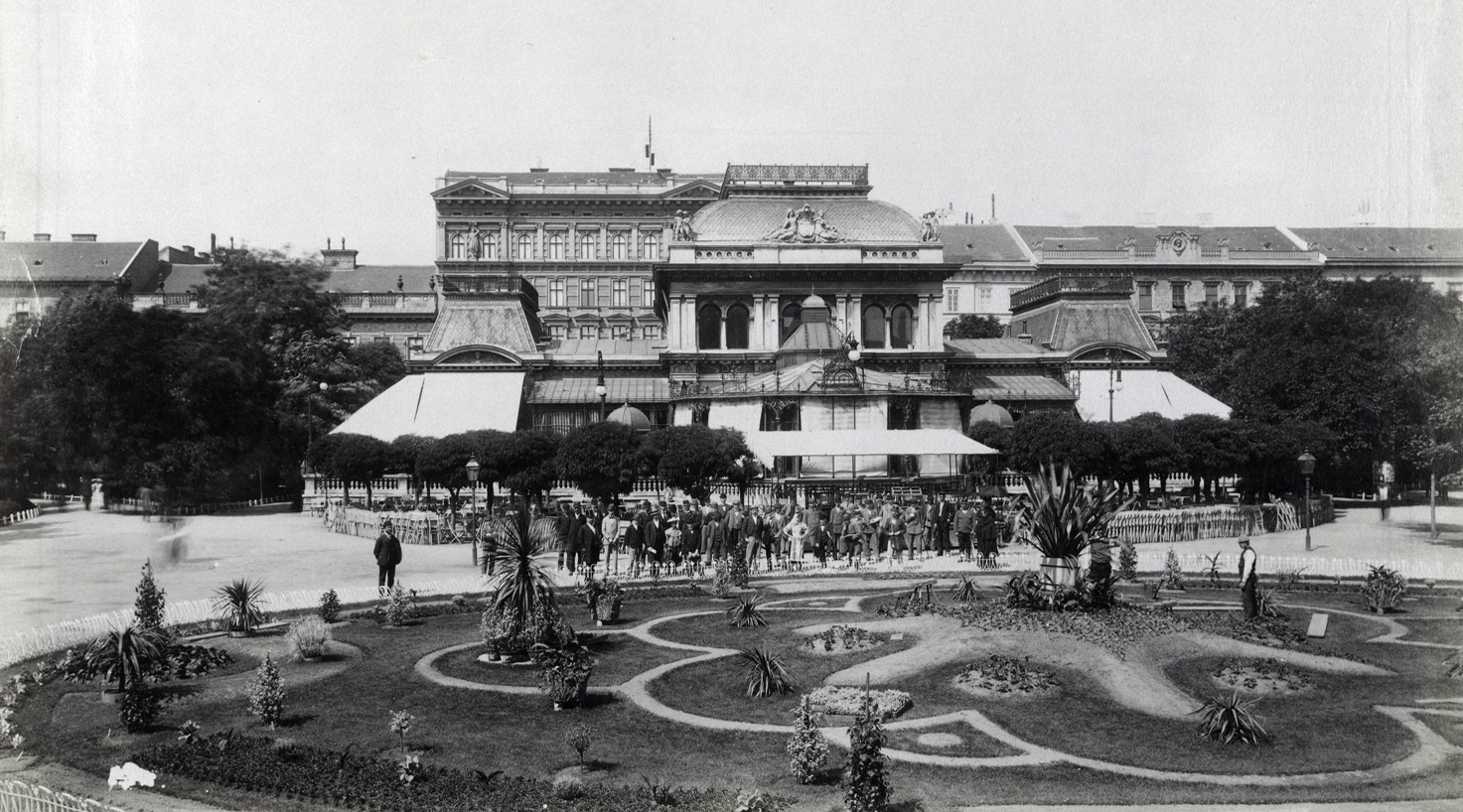
One of the selected locations was Erzsébet Square, the centre of the circular flower bed in front of the kiosk. György Klösz's photo was made after 1890 (Source: Fortepan/Budapest Archives)
The third chapter of the book is about the sculpture competition: how it was announced, what criteria had to be met, and how the committee accepted the completed samples. In the book, we can get to know all 9 applicants and 10 pieces of design work (also illustrated with pictures). One of the many interesting things is that György Zala, who was the main rival of the winner Alajos Stróbl, applied with two plans. The two of them are the biggest and most recognised sculptors of the era (at that time they won the tenders one after the other).
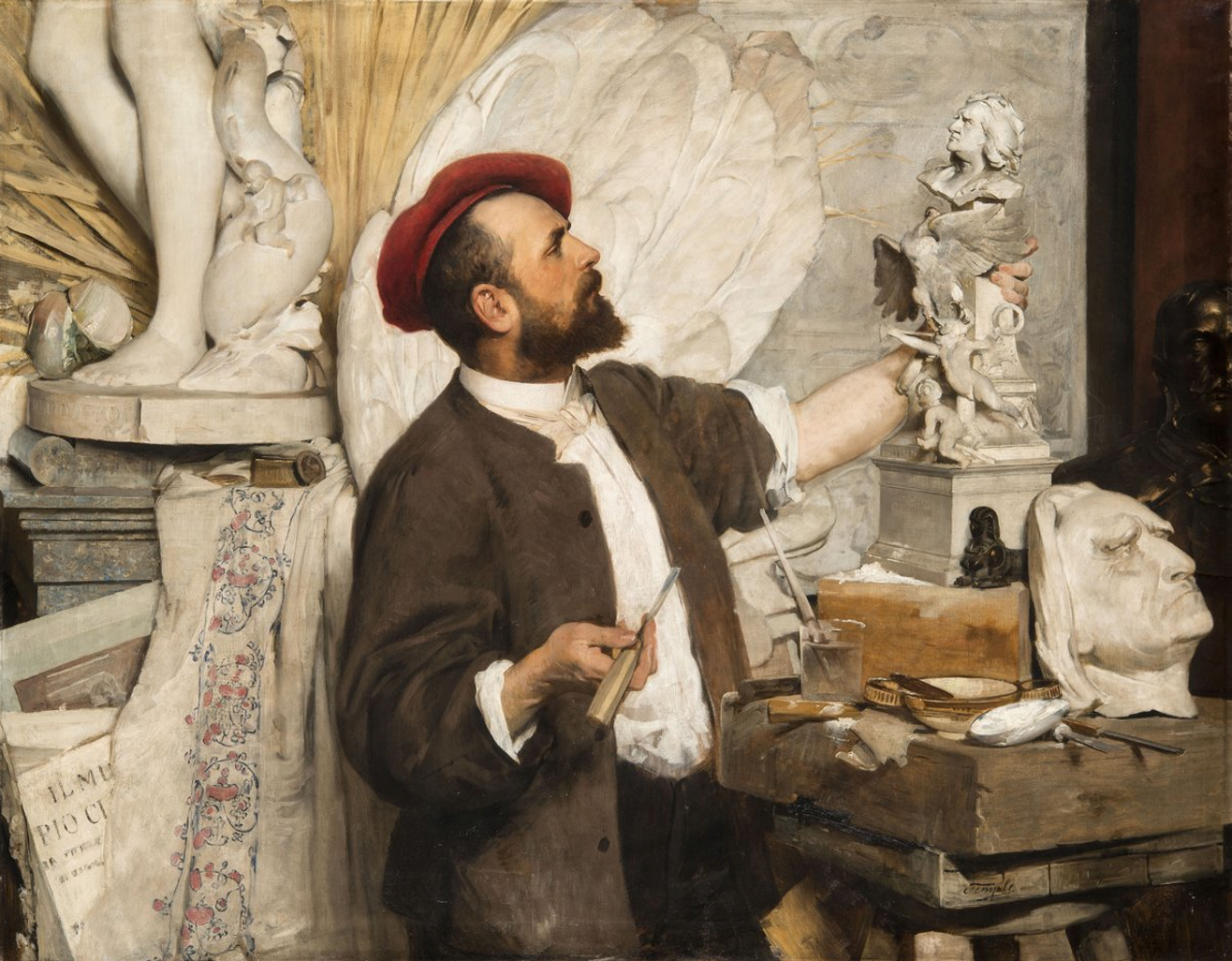
The winner of the Arany Sculpture competition in the painting Stróbl Alajos munka közben [Alajos Stróbl at work]. A work by Hans Temple from 1886, today owned by the HNG (Source: Hungarian National Gallery)
The fourth chapter guides us through Alajos Stróbl's life journey: what kind of family background did he grow up in, how did his years of study in Lőcse [Levoča] and then in Vienna pass, how did he stand out from the rest, who were his teachers and masters. It turns out, among other things, that he really liked the role-play parties organised in historical costumes, and that he organised such events himself as a teacher in Budapest. We can get to know many of his earlier and later works, read about his teaching activities and recognition, his studios and his wildly romantic country home near Liptóújvár [Liptovský Hrádok].
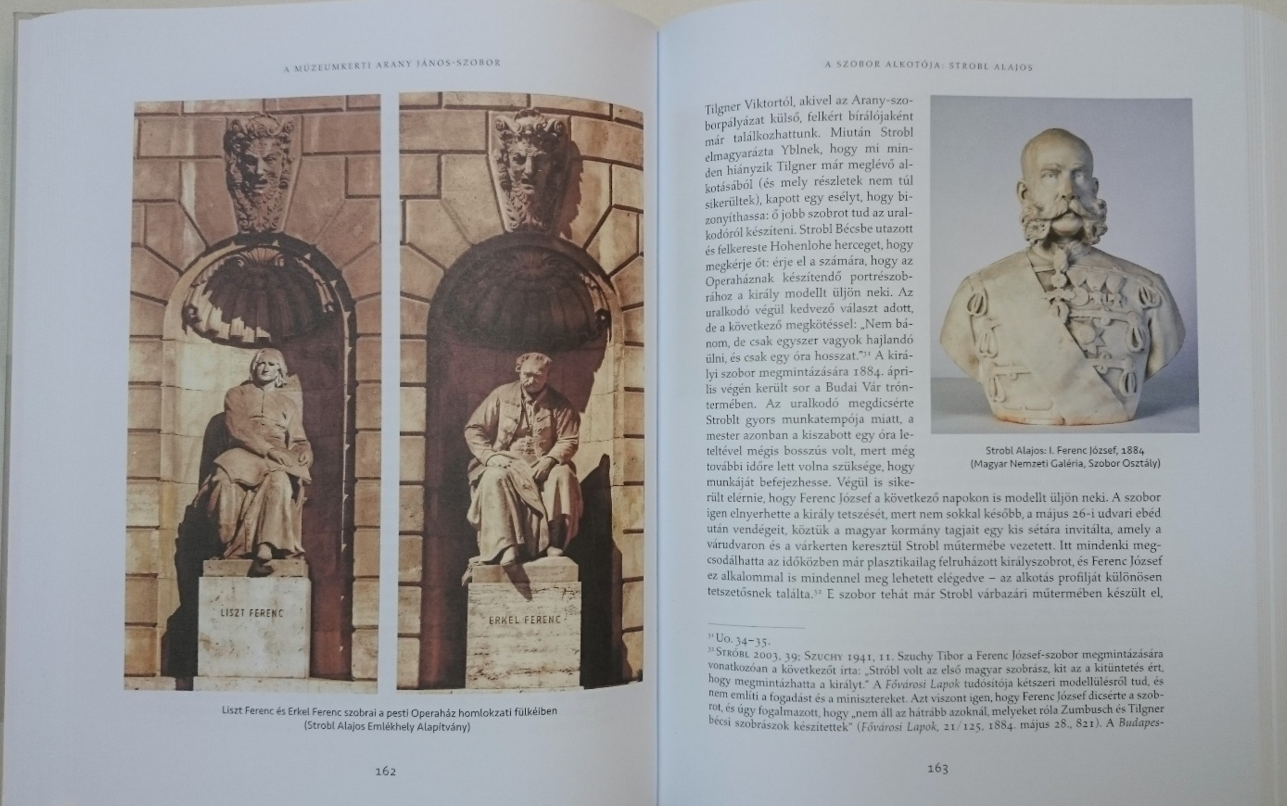
In addition to Alajos Stróbl's life journey, many of his sculptures are featured in the book (Photo: Dávid Mészáros/pestbuda.hu)
The fifth chapter is about the completion of the János Arany statue: after the successful tender, how the contract was signed, what was its exact content, and where was it possible to find a location for the modelling. We can find out how Stróbl made the statue figures, what he used for casting, which sources he used to shape János Arany's face, who were the models for the side figures (Miklós Toldi and Piroská Rozgonyi), and how they were found. The book also touches on small things, such as the challenges associated with borrowing artefacts (spurs and maces). Hard work is indicated by Stróbl's own admission that he ultimately made his mark with the János Arany statue.
"... the creation of the Arany Statue fills me so much that it is the most significant episode of my life."
The sixth chapter of the book, written and compiled by Béla Debreczeni-Droppán, is the story of the finished work from its inauguration to the present day: how the inauguration ceremony took place, how the public and the press received the statue. The monument also took on smaller and larger roles at later events: for example, at Kossuth's funeral, it was covered with wreaths due to lack of space, and dozens of people climbed on it at Endre Ady's funeral.
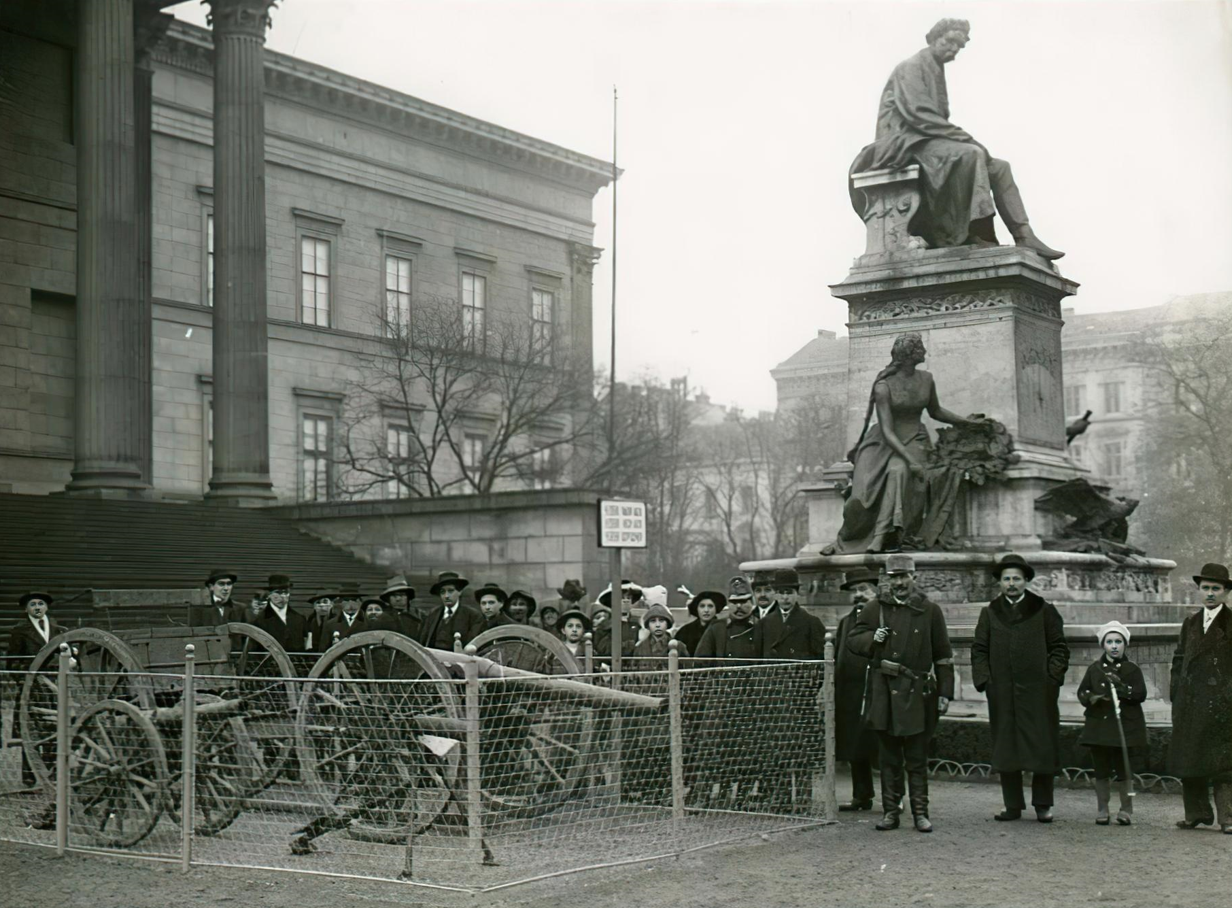
Scenery next to the statue: display of cannons captured from the enemy in 1915. Photograph of János Müllner (Source: Fortepan/National Széchényi Library)
We can read Kosztolányi's writings about his experiences with the Museum Garden and the Arany Statue, and there is also a separate subsection on the history of the five-pointed star placed on the Arany Statue's pedestal. We can also learn about the complete restoration of the monument between 2017 and 2018.
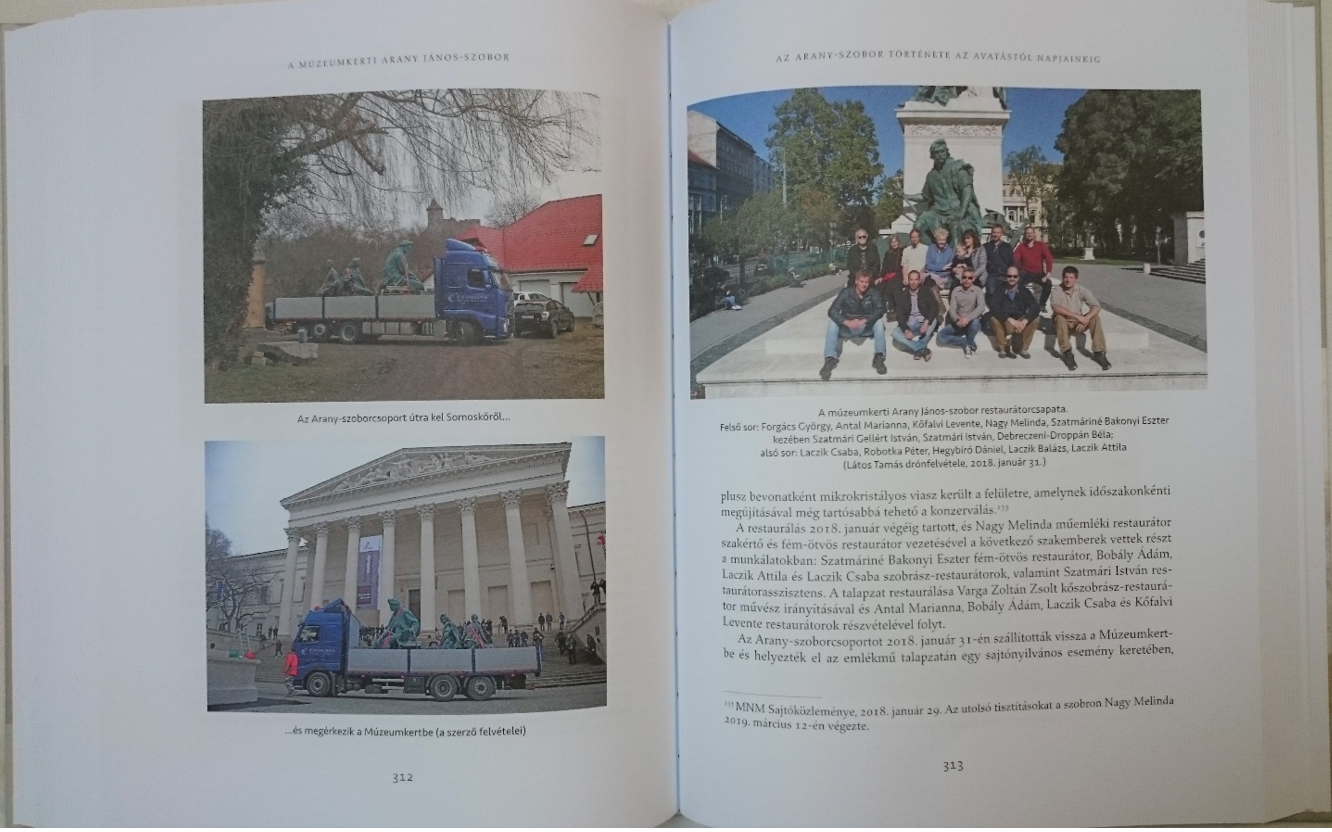
Many photographs capture the period of statue restoration, from the deliveries and work processes to the presentation of the restoration team (Photo: Dávid Mészáros/pestbuda.hu)
The second half of the book contains the documents of the Arany Statue Committee as a kind of giant appendix: among the 145 documents, you can read the minutes of the committee's meetings, the call for tenders for the statue, a report on the results of the public donation, descriptions of works, expert opinions, sometimes official and sometimes personal requests, price offers, resignations (for example due to a difference of opinion), other requests, claims and so on. These documents bring the reader even closer to the writing and conversational habits of the era of dualism, helping to understand the motivations and value judgements of the people of that time.
In the book, there are a lot of photos, and we can also see previously unpublished footage of Alajos Stróbl.
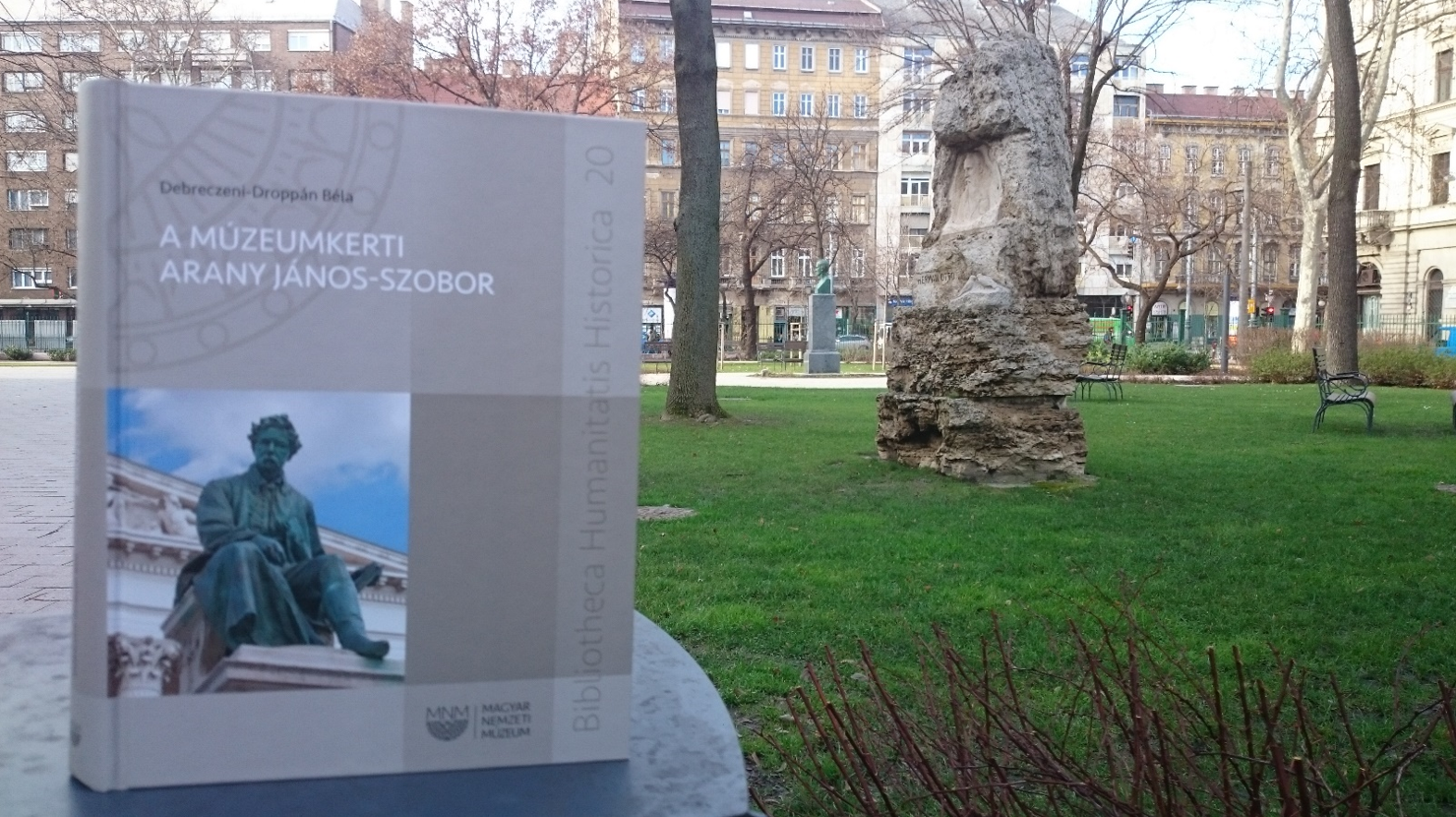
The volume's "visit" in the Museum Garden in January 2023 (Photo: Dávid Mészáros/pestbuda.hu)
The book A múzeumkerti Arany János-szobor tells a lot about the period when the characteristic cityscape of our capital was formed, and a whole series of masterpieces began to adorn the public spaces. It is a special treat to be able to see this world at the turn of the century through a sculpture competition, a winning creator, his main work and the people who evaluate the monument.
The volume published by the Hungarian National Museum should be read by anyone interested in the last third of the 19th century or the history of the capital itself, as well as sculpture and heritage protection.
Cover photo: The publication A múzeumkerti Arany János-szobor in front of the eponymous monument (Photo: Dávid Mészáros/pestbuda.hu)

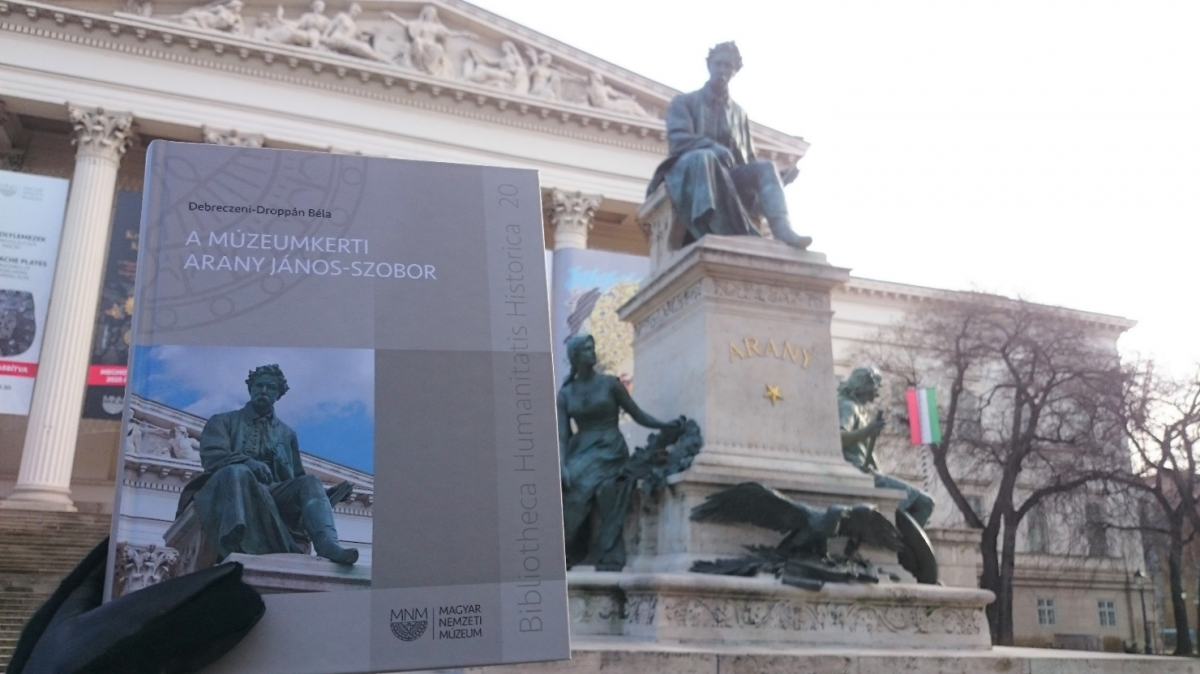


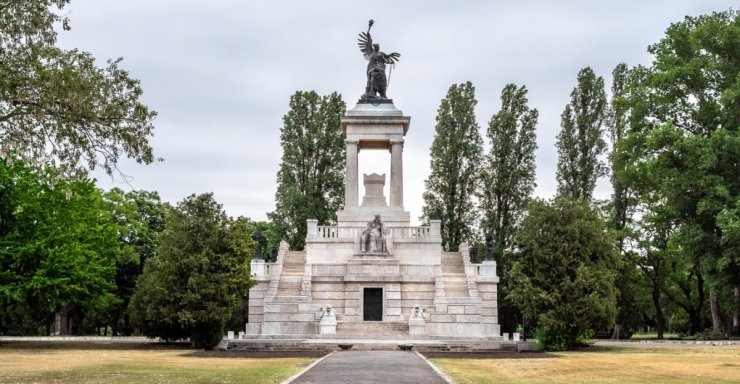































Hozzászólások
Log in or register to comment!
Login Registration